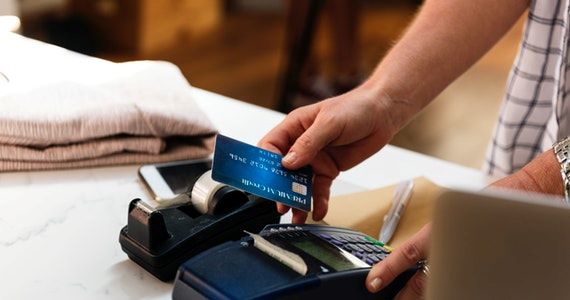How the move to electronic payments could be making it easier to spend…and what to do about it.
It’s Thursday morning and almost the end of the working week. You’re walking to the train station and you realise you’ve forgotten to top up your public transport card. No matter…a few clicks later and you’ve transferred $50 over.

At the station you grab a takeaway flat white before the train arrives…tap and go, too easy. At lunchtime you jump online and scroll through your newsfeed. Wow, there’s a pretty good one-day special from your local department store. You end up buying a new pair of pants, a replacement for your old wok and a couple of books.
After work you’ve got a few drinks organised with colleagues before heading home. When it’s your round you tap to pay with your smartphone. That night there’s nothing on TV. A few clicks from the comfort of your couch later and you’re settled in to watch a new movie you’ve downloaded.
Over the day you’ve spent close to $400 without touching a coin or banknote. It’s so effortless online, and the ease of tapping your card or phone at the supermarket or café beats the hassle of carrying coins and notes hands down. Plus with every transaction recorded it makes it easier to track your spending, budgeting and investments. What’s not to like?
Winners and losers
Cash payments in Australia are declining rapidly. Cash accounted for just 10% of all payments in 2017 and by 2022 this will fall to 2%. For all intents and purposes, Australia will be a virtually cashless society1.
It’s a trend that certainly has government backing. From an official perspective the notes and coins we were happily using for centuries have a lot to answer for. Banknotes and coins cost money to produce, they help to facilitate criminal transactions and they make it easier to avoid paying tax.
So the move to a cashless society dominated by electronic transactions, contactless payments and tap-and-go smartphones can only be a good thing for everyone, right?
Not necessarily. Like any technological development, there are winners and losers. In a cashless society the poor and elderly can find it difficult to access funds and pay for essential services.
Recent research in the UK highlights how much cash is still relied upon by older and poorer citizens. While only 4% of adults rely on cash, that includes some of the most vulnerable members of society. When you look at people who rely on cash day in day out, 39% are aged 65 or over and 62% have an income of less than 9,000 pounds (around $16,170)2.
How cashless impacts your spending
In the dash to cash we could be in danger of leaving more vulnerable sections of society behind. And the concerns about a cashless society don’t end there.
-
What implications are there for privacy when every transaction can be logged and monitored?
-
What protections are there against hacking and cybercrime in our electronic world?
-
What backup plan is in place if the technology fails during an outage?
But one of the major concerns about going cashless is how easy it makes it to spend money online or with the touch of a card or smartphone.
And you don’t even have to pay for the goods upfront, with AfterPay letting you order online and receive your goods before deciding whether you want them.
Managing our spending has got a whole lot more complex without the tangible reminder of dollar notes and coins in our wallets and purses.
And what about the next generation? It can be difficult to teach kids about money when they see us paying for goods so effortlessly without handing over any cash. Are they equating swiping a card with paying a physical dollar?
5 tips to control your spending in an electronic world
-
Try going out without your credit card to remove temptation—you can still pay for essentials, but you’ll need to use notes and coins.
-
Think about moving from a credit card to a debit card so that you’re not spending money you don’t have—even if it is tap and go.
-
Teach your kids about money by giving them a list of things to buy with a specific amount of cash—if they run out, they’ll need to adjust their budget rather than access easy credit.
-
Embrace the online advantages of monitoring your spending .
-
Ringfence some of your income from temptation by setting up an automatic transfer to a higher interest savings .
The digital revolution is no different to past innovations in its capacity for good and bad. While your smartphone certainly makes it easier to rack up a pretty big bill without too much trouble, it also makes it easier to track your spending and set up a budget.
As the move to a cashless society changes our money habits, our challenge is to harness the power of the new technology to make a positive difference to the way we spend and the way we save.
1 Finder.com.au, The humble cheque to be extinct by 2019, 1 February 2018.
2 RSA Action and Research Centre, Cashing out: The hidden costs and consequences of moving to a cashless society, January 2019
Important:
This information is provided by AMP Life Limited. It is general information only and hasn’t taken your circumstances into account. It’s important to consider your particular circumstances and the relevant Product Disclosure Statement or Terms and Conditions, available by calling Phone 02 9906 6566, before deciding what’s right for you.
All information in this article is subject to change without notice. Although the information is from sources considered reliable, AMP and our company do not guarantee that it is accurate or complete. You should not rely upon it and should seek professional advice before making any financial decision. Except where liability under any statute cannot be excluded, AMP and our company do not accept any liability for any resulting loss or damage of the reader or any other person.


